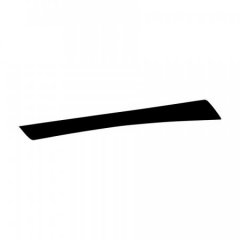Extension of "Newb Questions That Never Get Good Answers: Part 3"
This is an extension of "Newb Questions That Never Get Good Answers: Part 3." Please read it in order to understand this.
I have said that the Japanese stroke order standard screws up the least of all. However it still screws up. I have recently realized that they screw up so little, that the incorrect stroke orders can be listed here and memorized in a few minutes.
土(王生里): 楷書 stroke order resembles 行書 stroke order. Rarely will you find an exception. This is one. In 行書, when 土 occurs above other components, such as in 寺, it is 一丨一. If it occurs elsewhere, it is 丨一一 (although it is sometimes 一丨㇀ when on the left). Also, when characters have parts that resemble 土 (usually on the bottom), it will also follow the 行書 stroke order for 土, e.g. 王 in 行書 is 一丨一一, 生 is 丿一丨一一, 里 is 丨乛一一丨一一. However, in 楷書, 土 is 一丨一 in all cases. 生 is 丿一一丨一. 里 is 丨乛一一一丨一. This aids in maintaining regularity, which is a defining characteristic of 楷書.
上(占卓): 上 should be 一丨一. The first 一 can be replaced by 丶 or ㇀ (à la 歐陽詢, among others). Other places where there are two strokes that resemble the first two strokes of 上, such as in 占 and 卓, are also like this.
必: 丿㇃top丶left丶right丶. The top 丶 can be replaced by a small 丿 (歐陽詢).
那: The left part should be 丿㇆一一. This part is a 楷化 version of the the 草書 of 冉. One can see this stroke order in anyone's 草書 or 行書.
無: 丿一一一丨丨丨丨灬. The fourth 丨 can be replaced by 丿 (歐陽詢, 顏真卿, 柳公權, among others).
馬: 丨一一一丨㇆灬. 田蘊章 says that 一丨一一丨㇆灬 is also acceptable. I see 丨一... more often in 行書 (I can't tell for certain in 楷書)
㠯: 田蘊章 says it's 乛 一丨乛一 in all cases. I've never seen this in 行書. In 楷書, maybe if the 丨 doesn't extend above the first 乛. I find 丨乛 一乛一 most likely in most cases. Just be careful not to mix up 官 and 宦 in 行書.
隹: 丿丿丨一一一丨一. It might seem otherwise, as the left part resembles 亻, but all of the evidence I've seen suggests that it is as I have described. 田蘊章 either disagrees or did not catch this. On the beginning of the second 丿 is usually an additional rightward movement (歐陽詢, 顏真卿) making it look something like ㇇.
艹: Graphemically 丨一一丨 but often rendered 丨㇀一丿. Sometimes this entire component is replaced by [丷 above 一], even in 楷書 (歐陽詢).
臼: 丿丨一乛一一.
Once you remember these stroke orders, the rest can be looked up in any Japanese standard stroke order reference, such as kakijun.main.jp.



2 Comments
Recommended Comments